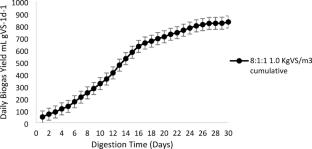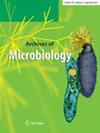Flow cytometric quantification of methanogens in anaerobic digestate
Abstract
Anaerobic digestion (AD) is an efficacious waste treatment technique that promotes organic stability and energy recovery. Methanogens are critical organisms that constitute the bottleneck in this process. The process relies on methanogenic archaea, which are crucial organisms that create a bottleneck. The quantitative assessment of these organisms can enhance process efficiency, identify issues prior to failure and result in community-focused process control systems. This paper introduces a flow cytometric method that is autofluorescence-based and used to rapidly and economically measure methanogenic archaea in a selection of microbial communities and raw substrates. The technique was applied on a sample of anaerobic digestate. The methanogenic archaea were quantified by measuring the specific fluorescence of their co-factor F420 which were estimated as 1.85 × 105 cells mL^-1 using a standard curve with fluorescence intensity recorded throughout a 15-day period under storage in Phosphate Buffered Saline (PBS) at 6 °C. The thiazole orange screening facilitated the distinction of the complete microbial community from the persistent particle noise. The Sanger sequencing of the mcrA gene confirmed the findings leading to the detection of Methanosarcina sp. and Methanoculleus in FACS (Fluorescence-Activated Cell Sorting) sorted cells. This work presents new perspectives towards setting up of an anaerobic reactor that is exclusively based on methanogens thereby enhancing process efficiency and enabling the effective treatment of waste, hence reducing its environmental impact.


 求助内容:
求助内容: 应助结果提醒方式:
应助结果提醒方式:


